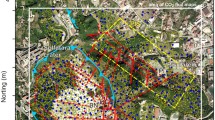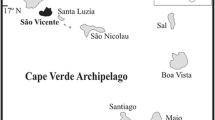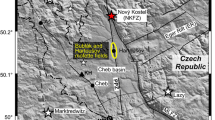Abstract
Since the 8th century, more than seventeen eruptions have been recorded for the Mt. Fuji volcano, with the most recent eruption occurring in 1707 (Hoei eruption). For the past 300 years the volcano has been in a quiescent stage and, since the early 1960s, has exhibited neither fumarolic nor thermal activity. However, the number of low-frequency earthquakes with a hypocentral depth of 10–20 km increased significantly beneath the northeastern flank of Mt. Fuji in 2000–2001, suggesting a possible resumption of magmatic activity. In this study, diffuse CO2 efflux and thermal surveys were carried out in four areas of the volcano in 2001–2002 in order to detect possible signs of the upward movement of deep magma. At all survey points, the CO2 efflux was below the detection limit with the exception of a few points with biological CO2 emission, and ground temperatures at a depth of 20–30 cm were below ambient, indicating no surface manifestations of gas or heat emission. Should magma rise into the subsurface, the diffuse CO2 efflux would be expected to increase, particularly along the tectonically weakened lineation on the Mt. Fuji volcano, allowing for the early detection of pre-eruptive degassing.
Similar content being viewed by others
Author information
Authors and Affiliations
Rights and permissions
About this article
Cite this article
Notsu, K., Mori, T., Vale, S. et al. Monitoring Quiescent Volcanoes by Diffuse CO2 Degassing: Case Study of Mt. Fuji, Japan. Pure appl. geophys. 163, 825–835 (2006). https://doi.org/10.1007/s00024-006-0051-0
Received:
Revised:
Accepted:
Issue Date:
DOI: https://doi.org/10.1007/s00024-006-0051-0




